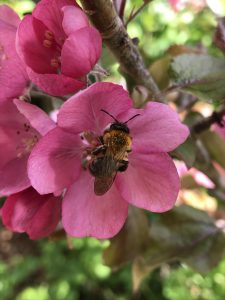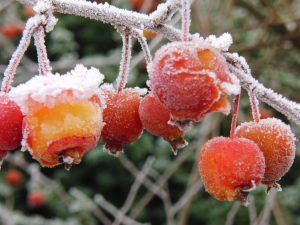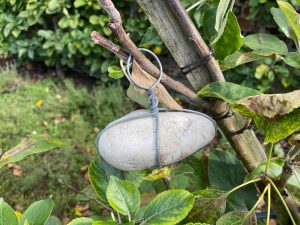
Don’t forget garden fruit this winter. Plant more fruit and fruit trees to provide natural food for nature and plenty of fruit for your family too
As winter approaches, anyone that gardens and grows a little produce knows the incredible inherent value of homegrown fruit. It can be bottled, dried, frozen, jammed and stored for winter use. And let’s face it with the cost of ingredients and the crazy reality that apples and other fruit in our shops are being shipped thousands of miles before sale, it is so much healthier and better for the environment to grow your own.
Fruit has so many other roles to play in our gardens. The flowers need pollinators to move the pollen from flower to flower to fertilise the seed and form the actual fruit. But what that means for the pollinators themselves is that there is food in the garden for them. For many adult pollinators including butterflies, bees, wasps, hoverflies, moths, some beetles and even hornets, nectar in the flowers is a vital sugar rush; An energy rich elixir that fuels their activity. Others like the bees (and there are 270 different species of bees in the UK), they feed their offspring protein rich pollen. So our fruit blossom in spring doesn’t just look nice, it provides vital food for our insect friends.
Food chain
Keeping the insects fed and safe in the garden is actually really important. Despite the negative PR around bugs and pests and creepy crawlies, without the invertebrates, pollinators, mini beasts and microbes, our gardens would be dead. Finished. Infertile. Overrun with decay, death and disease. And what is more there would be no food for the birds and other creatures that depend on insects as the main part of their diet. The bats, the birds, the hedgehogs, shrews, mice, frogs, toads, newts, slow worms, snakes, lizards and even the fish. When you understand that everything is a meal for something and that every creature has its place in the food chain, a live and let live philosophy makes so much more sense.

And don’t forget that any surplus fruit, windfalls or any out of reach will also be food for fruit eating birds. Blackbirds and other ground feeding birds love to peck at fruit softened by frosty weather.
Make room for fruit
You might be surprised that growing fruit doesn’t necessarily mean you need a large garden. Tree fruit of course will grow much bigger than a bush of gooseberries, or a few strawberry plants. A large tub is perfect for a few raspberry canes and in my garden in June the bumblebees love feeding on the flowers.
You can train and trim many tree fruit to grow in smaller space. First you need to choose trees that have been prepared (grafted) to grow on a dwarfing rootstock. Sounds complicated but all it means is that an excellent fruit variety has been welded to a root system that will stop the fruit tree growing too big. The top (called the scion) will bear the excellent fruit that you have chosen to grow while the bottom (the root stock) will grow in the ground and restrict the growth of the whole tree. Apples are a great example of this and there are many great varieties that you can buy already grafted to a dwarfing rootstock (look for MM106 which will support a medium tree) or patio fruit plants that have been bred to grow in pots and containers.
Train or torture

You can get more fruit into a small space by careful pruning and training. Think about espalier apples and pears that are grown in a two-dimensional space and can be used as trellis, boundary dividers or trained against a wall. But this is a technique that not only saves space, it also helps the fruit tree to be more productive. By stressing the plant and making the stems grow more horizontally the sap flow is restricted and the plant produces more flowers and subsequently more fruit. You can see this technique in action at many gardens where fruit is grown in a walled garden. A great example is the parabola walled garden at The Newt in Somerset, where the apples are almost tortured into twisted forms with weights and very careful training. Have a grow and be brave, you will be surprised what you can achieve even in a small garden.










